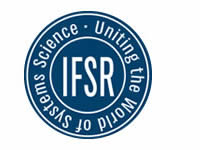Proceedings of the IFSR Conversation 2010, Pernegg, Austria
Yoshi Horiuchi (JP), horiuchi@sic.shibaura-it.ac.jp (Team leader)
Gerhard Chroust (AT), Gerhard.Chroust@jku.at
Gordon Dyer (UK), gordon.dyer@btinternet.com (Reporter)
Sadaharu Ishida (JP), sishida@microsoft.com
Leonie Solomon (AUS), leonie.solomons@gmail.com
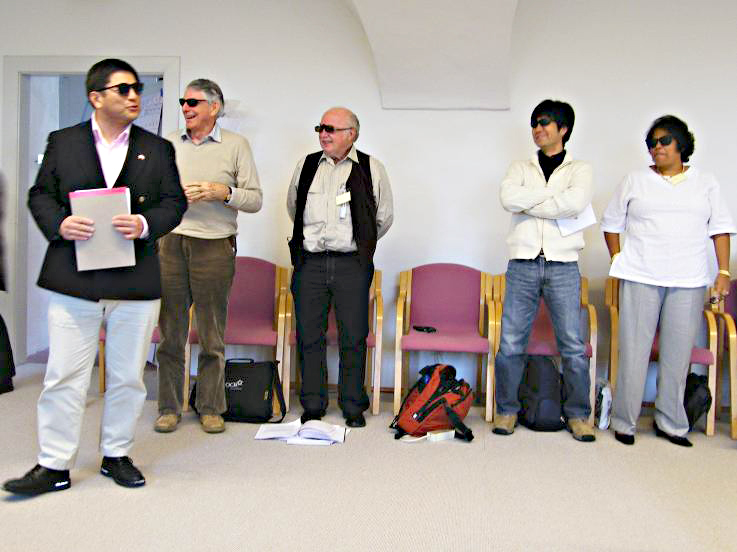
Team 4 members: Towards Integrative Systems Engineering: A Case Study Derived From Movement Of People, Goods And Information, Proceedings of the IFSR Conversations 2010, Pernegg, Austria
Summary
The paper explores a hypothetical urban transportation problem as a basis for developing a more “systems rich” form of a systems engineering approach. We believe that our chosen method of consideration of urban transportation represents a more systemic approach to a complex case study. Rather than considering the problem of transporting people and goods, we consider the movement of people, goods and information as one system while traditionally one uses information as means to improve the transport of people and goods (‘logistics’), thus limiting the scope of the system boundary. ICT (Information and Communication Technology) is also recognized as a lever of change and as a typical source of counterintuitive effects. When used effectively it has the potential to reduce traffic loads and or journey times, a feature we would hope to exploit; but it also has the potential to increase traffic flows such as for leisure purposes. People learn of more opportunities for leisure e.g. an art exhibition, through faster and more pervasive ICT and this stimulates their response to travel to it.
Most emphasis is given to a design methodology which brings “requisite variety” (Ashby, 1956) through user-designers being involved in all aspects of the design of the exemplar improved urban transport system. The wider boundary considerations provide the potential to increase acceptance and reduce undesirable repercussions caused by introducing change.
The paper identifies the additional considerations that would be reflected in the key phases of a typical systems engineering design process. We call this enhanced process “Integrative Systems Engineering”.
Background
This report provides a summary of the progress made by Team 4 at the IFSR Conversation held in Pernegg (the 16th IFSR Conversation) from Saturday 10th to Thursday 15th April 2010. During the pre-conversation team formation stage YH had suggested that the systems engineering domain be explored in the context of “a new urban, personal door-to-door transportation system: a demand articulation for city dwellers”, in that this would provide a focus as well as investigating a key problem affecting many nations. However, the input papers from the group members strongly emphasized the need to consider and develop a method of applying systems thinking to many similar problems. The intent was to cover both the general and specific issues surrounding the introduction of creative new technology including ICT, and the issue of matching demand to supply with the aim of allowing consumers to have a greater say in the introduction of new technology.
Introduction
This paper covers the phases of:
- Our initial exploration of the topic
- Steps towards our focus of inquiry
- Development of a systems design for a “Problem Champion”18 in a transportation context.
- The emergence of a new perspective of Integrative Systems Engineering as reflected by a summary of the key differences between our proposals and that of typical systems engineering practice.
- Some first thoughts on emerging technology and projects related to an integrative transportation system.
- Conclusions
Initial Exploration
Our initial exploration of the topic, some carried out on Saturday evening, was focused on scoping the area, with particular concern on purpose and boundary. We also discussed the process of our conversation and the output we desired. It was agreed that we should endeavour to complete the reporting requirement as far as possible before we left Pernegg, and that the latter part of Wednesday should be allocated to the completion of the first draft. We decided to capture our initial thoughts on a flipchart laid horizontally (Walton, 2006) on the table so as not to ascribe any apparent authority to the person standing at the chart. All members were invited to write notes on the flip chart.
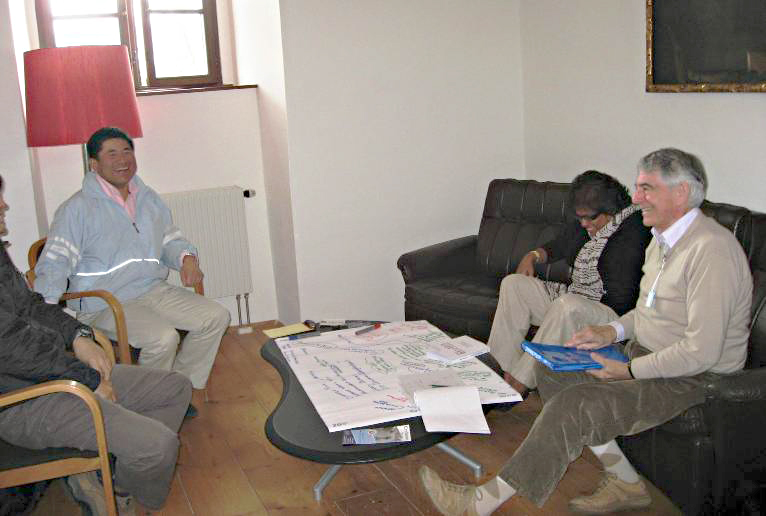
Team 4: Towards Integrative Systems Engineering: A Case Study Derived From Movement Of People, Goods And Information, Proceedings of the IFSR Conversations 2010, Pernegg, Austria
Questions Raised
The questions tabled related to the scope were:
1. Should we explore the introduction of new technology as a general problem, or focus on urban transport as an exemplar? The view was that the latter would provide markers for the general area, and that such a specific problem would be of interest to INCOSE (International Council of Systems Engineers). Team 4 had been requested in the introductory session to consider sending a representative to the INCOSE meeting (in Chicago) which precedes the ISSS 2010 Conference (Waterloo, Ontario) in July.
2. Should we consider urban transportation in a developed or developing country, or should it be a specific city? Because group knowledge was largely linked to the developed world, this would seem to offer most merit. In short we lacked the requisite variety to consider issues in the developing world. The question of a specific city was left open. While major cities had some common characteristics, their individual situations varied due to culture and history. We were inclined to consider a city in a generic term, with Vienna and its Mayor often mentioned only as an example and as a possible focus of discussion of a Problem champion, and Stakeholders of a city.
3. What should be the timeframe of consideration? Was it to be focused on a current context based on what we can do now with some current and emerging new technology, e.g. Segway19. If this is the case what would be the incremental steps on, say, a case study of a hypothetical area of 5 x 5 kms. Alternatively, should we be focused on idealized system design with a 20-30 years horizon, or even longer 50-100 year horizon (see also Crawford 2002) ? We recognized that a longer term view provided a better chance of changing culture towards personal transportation. Changing behaviour patterns and mobility demand is vital in the context of conserving resources, and reducing pollution.
4. Was our initial trigger the correct starting point? “Personal” as stated in the trigger needed further definition. “Personal” sounds like an individual need, but we should take into account that some groups need to cater for more than one person. The needs of a mother could include the requirement to get several children to school and back.
5. What to transport? We decided to take a new, broader approach, by considering People, Goods and Information (PGI). This required us to consider their similarities and differences. We also investigated briefly the possible extent of “substitutability” of PGI items by one another. e.g. sending an email instead of a letter, accessing a home page instead of enquiring at a railway station counter, and wider use of systems like Skype.
ICT and Its Potential Impacts on Traffic Loads
ICT (Information and Communication Technology) was a potential vital lever for change. One issue was to what extent ICT could reduce physical movements. It obviously eliminates the need for some travelling, especially for acquiring information somewhere. There is, however, also a danger that ICT and telecommuting could well result in the generation of more travel than it eliminates. Indeed, one study has highlighted a counterintuitive effect in that information can increase transport demands. According to Graham and Marvin (2001)
“Rather than simply being replaced, transport demands at all scales are rising in parallel with exploding use of telecommunications. Both feed off each other in complex ways, and the shift is towards highly mobile and communications technology”
We felt that we could offer some support to this conclusion. The advertisement of leisure opportunities by a variety of ICT means could well stimulate travel e.g. to a new art exhibition that previously would not have had wide promotion. However, we recognized that this is a complex area. Experience from Tokyo suggested that the current transportation network was not, in any case, used to best efficiency. A journey in Tokyo is best undertaken at different times of day, using a combination of different transport modes. During one period, going from A to B might best be done using say, surface bus, subway and walking; and then in another period by walking and then subway. Knowing what to do for the best traveling means in terms of time and / or comfort is not clear, though the technology to improve this, using mobile phone, is now becoming available. Knowing what to do, and when to do it, is an area where information could help travellers. We believe that relatively little data on the purposes of travellers is known and such data sampling, collected on an anonymous basis, could be beneficial for modelling and determining the effects of potential changes. These data could usefully be extended to cover visitors and tourists coming to the city.
There are possible counter-intuitive effects when attempts are made to drastically change systems. For example in the case of reducing population in urban areas to reduce air pollution levels. Moving population out would increase commuting and fuel consumption for travel between the surroundings and the city and in the surroundings themselves. This GC described in terms of the Floriani-Principle20.
To see whether these issues could be examined through a light application of a Soft Systems Methodology (SSM), see (Checkland, 1981, 2009) we drew some simple systems maps, seeing whether there was a feasible or desirable system for change, or a root definition of a relevant system. There was little prospect of completing an overall systems map of generic problems due to complexity, and the lack of diversity and requisite variety in the Team.
Entry Point For Further Discussion
LS suggested that in order to provide an entry point for discussion each team member should write down what for them was a key question they wanted the answer to. This we did on the flat flip-chart (Walton, 2006). As we did this every team member added to the points and discussion followed. The points that arose were:
• How to change attitude and culture towards public transport? Financial levers are the most common ones used by national and civic government, e.g. taxation, congestion charges, and tolls. Are there other incentives which are not penalties? Will pricing make a difference, indeed what be the effect of free travel?
• How to exploit the possible public goodwill towards changing of values and ethics by stressing the benefits of change i.e. reduction of fossil fuel use, air pollution and land use – against the possible increase of inconvenience and time spent travelling?
• How to improve the effectiveness of public transport to overcome the convenience of the car, its luggage capacity and its social status21? Visual design of public transport (aesthetic perspective) is a potential lever for change.
• How to deal with relationships between boundaries e.g. city/town planning and health management systems?
• What role can ICT and information movement play in reducing movement of people and
goods?
• What is the nature of the movement of information in the broader sense?
• Leverage points in general were agreed as key considerations – the key questions are what to change, and why, and what are the criteria for choice?
We then constructed a systems influence diagram to cover these points (see diagram in Fig. 1 below).
As we continued our discussion we found ourselves taking a hypothetical position of submitting a proposal for the re-design of movement of people, goods and information to the Mayor of Vienna, as the problem champion. Hence, our focus at that point was 2010 with the current and emerging technology. However, we also recognized that such a dialogue might need to change in a different cultural context (Hofstede, 2005).
At this point we had what is often described in conversation terms as an “Aha!” moment. The realization was that we could not design a system approach for generic transportation problems and for all contexts. We were better placed to design a systems-based toolkit to help a problem champion (e.g. the Mayor of Vienna) deal with their specific case/context. This led to the formulation of the following draft statement for submission to the full Pernegg conversation group:

Figure 1 Influence Diagram on Demand for Movement, Team 4: Towards Integrative Systems Engineering: A Case Study Derived From Movement Of People, Goods And Information, Proceedings of the IFSR Conversations 2010, Pernegg, Austria
Design a system of inquiry
for
How to design a system which
Will help a problem champion reduce/solve/ameliorate/improve the
movement of people, goods, and information.
Development Of Inquiry Design
Reflections relating to an Initial Dialogue with the Problem Champion
We would expect any major city to have the following features as a systemic description of the patterns of growth in demand for mobility (Geerken, Vercalsteren and Borup, 2009):
- Increasing population as result of greater life expectancy
- Numbers of households increasing, due e.g. to divorce and youngsters leaving their home more often and much earlier
- Increase in double income households
- Internationalisation and globalization (high levels of imported goods)
- Urban sprawl
- Increase in welfare combined with available leisure time
- New needs for (international) mobility in wider networks due to rapid growth of ICT
We assumed that a particular context might have a particular opportunity to exploit an emerging technology, or have identified a particular problem that might be important to address. Another question is whether the aims need to cover disaster planning, this could be “slow onset disaster” e.g. city centre congestion or “rapid onset disaster” e.g. earthquake or Tsunami. In Vienna we would not expect to deal with Tsunami!22 See (Mrotzek, 2008, 2009) for various archetypes of the dynamics of catastrophes.
As a precursor to designing a “design system” we discussed how to approach a typical problem champion and how to open the dialogue both in the context of process to be adopted and the content/boundary of the investigation. We felt that three areas were particularly important:
- The need to ascertain whether the “consultancy” design, which was in effect what Team 4 was exploring, would be primarily “content” based, or “process” based.
- The need to include diversity of opinion into the stakeholder group.
- The need to evaluate any methodology process.
Prima facie all consultancies will have both a content and process element. One interest here is, which component will predominate.
Diversity of Stakeholder Group
As systemists our general intention will be to involve a “necessary and sufficient” group of stakeholders in the design consultation process. This would enable the design process to benefit from diversity and wider requisite variety. The stakeholder group should include all the normal representation that would be expected in an engineering project, e.g. technical specialists from existing /potential suppliers, political and financial experts. But it must also include “end-users” i.e., those who use the current system, those affected by the system, and those excluded or otherwise disadvantaged, by the current system (e.g. the disabled). If a large and complex system is under consideration, with possible political issues being buried beneath the surface, it may not be as straightforward as we would like. The project champion might have his/her own views or have been given views by an internal advisor. Thus it would be important to stress the value of involving the “user-designer” in terms of several dimensions:
- Ethical and Philosophical level – it is unethical to design for someone else. The designers of a system should include those who use the system or who are affected by the system (Banathy, 1996).
- Economic level – there is no point in designing a system which no one uses.
- Political level – involving local citizens in decisions on a key project could be a vote winner.
The selection of an initial group of stakeholders for a core consultation group might also lead, following their interaction, to suggestions for more stakeholders to be involved. The issue of numbers and value of stakeholders is challenging and a UK Institute of Environmental Management & Assessment (IEMA) publication (IEMA, 2002) provides some useful guidance on this. The crucial point will be the clarification of the initial boundary for stakeholders.
Clearly there is a need to put a limit around numbers of stakeholders to form a core consultation group – both in the sense of “law of diminishing returns” and group management. GC proposed that this be restated as “law of diminishing contribution”, and that when this point is reached we have “closure” (in a logical sense) around the stakeholder core discussion group. The problem of consolidating and integrating many different stakeholders was discussed at length in (Chroust, 2004) when analysing Agoras with large numbers of people.
Outside of the core group, opinion-seeking surveys might be useful for specific types of questions. The diagram below from the UK IEMA (IEMA, 2002) provides helpful ideas on participation levels and selection of techniques. In view of today’s possibilities of ICT it should be augmented by electronic conferencing systems, interactive electronic discussions, blogs, etc.
Evaluation
The interactive participation of many stakeholders is of key importance, especially in the very early phases of the conceptualization of a system one needs a wide discussion with all potential stakeholders. Problems with such democratic approaches were discussed in (Chroust 2004, Espinoza, 2004, 2005).
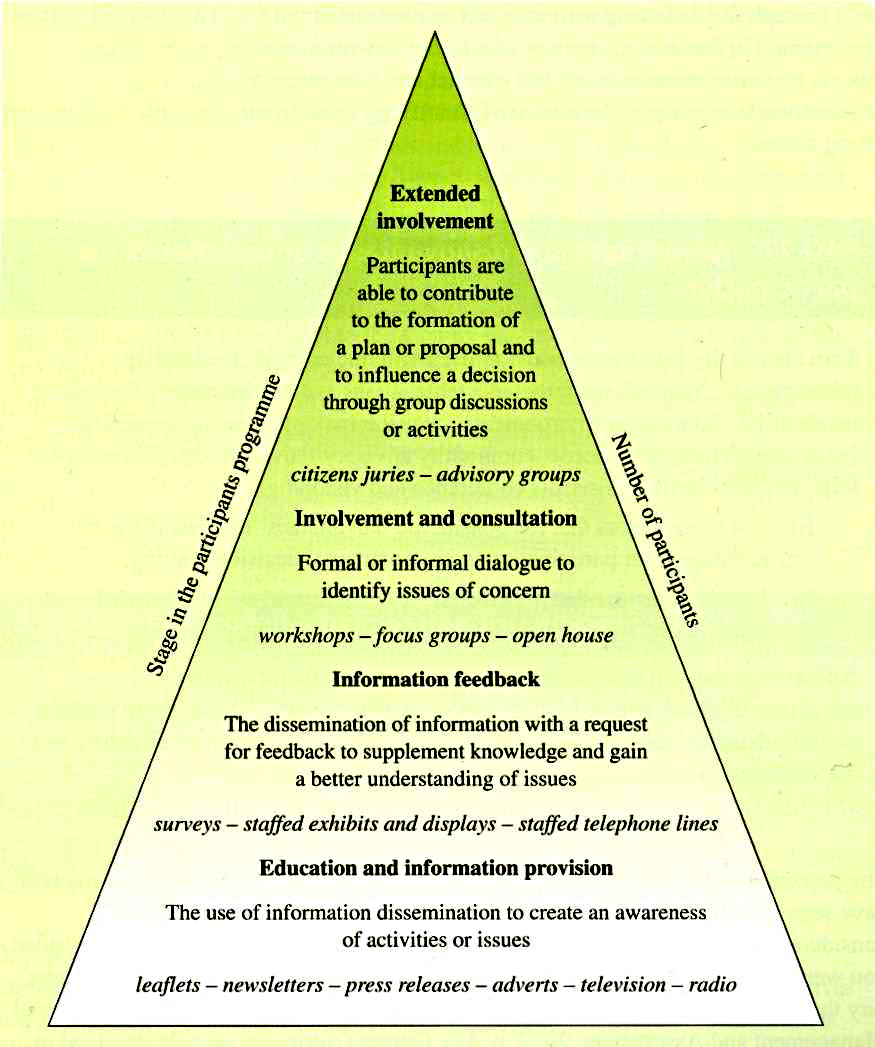
Figure 2 Levels of participation, techniques and factors influencing the selection of techniques, Team 4: Towards Integrative Systems Engineering: A Case Study Derived From Movement Of People, Goods And Information, Proceedings of the IFSR Conversations 2010, Pernegg, Austria
Search for Methodology
In the design of a technical system there are several types of tasks which considered the system from
different viewpoints (usability, technical feasibility, cost, coarse-grained structure, fine-grained
structure, …) and thus address different stakeholders and different types of problems (Chroust-2010).
Following ISO 15288, a standard for developing technical software systems, the activities can be depicted as in Figure 3 below. It has to be stressed, that the diagram only shows the logical order of the tasks, but does not imply a specific sequence in which parts of these tasks will be performed and many feedback loops and iterations will be needed. For example, one could define some of the specification, then based on that do part of the design and then do the next part of the specification. Feedback and re-doing of previous work is also often necessary.
The more innovative and conceptually creative a system is, the more importance (and time and effort!) has to be put into the early phases. This is especially with respect to understanding what the system should be designed for. ISO 15288 distinguishes two ‘start-up’ phases: ‘Stakeholder Requirements Definitions’ where stakeholders set down wishes and‚ ‘Requirements Analysis’ where a single set of feasible and consistent requirements is created.
This is similar to Soft Systems Methodology, SSM, (Checkland 1981, Checkland 2009) where a ‘rich picture’ is drawn containing all available information, including non-technical issues like personal motivations, animosities, power plays etc.
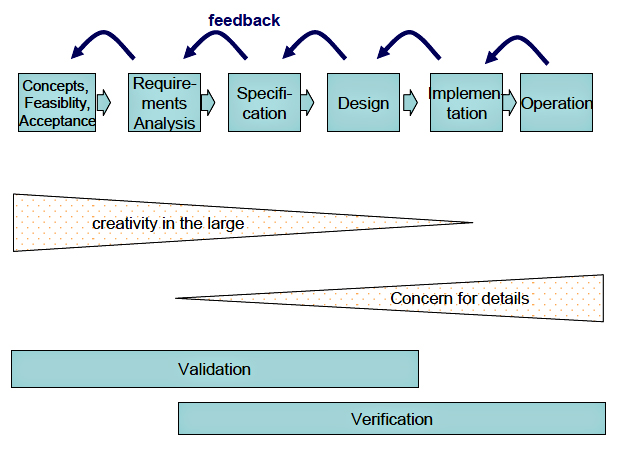
Fig 3 Basic design cycle, Team 4: Towards Integrative Systems Engineering: A Case Study Derived From Movement Of People, Goods And Information, Proceedings of the IFSR Conversations 2010, Pernegg, Austria
The diagram (Fig. 3) also indicates the lessening influence of creativity with respect to the whole system in favour of more attention to technical details and the need for performing quality assurance activities in parallel. Initially the validation actions are concerned with the question “it this the product we need?’. Later verification activities will be pose the question “is the system built in the right way?” Various methods are available there.
For the issues discussed in Team 4 only the very early phases of the design process were of focal interest. We approached the development of a systems design by pooling descriptions and ideas relating to different methodologies with which we were familiar. These included: Ackoff (2001), Beer (1989), Checkland (1981, 2009), the UK Open University Hard System Methodology (2003), and Vester’s Sensitivity Model (2007).
We concluded from this review that no single systems methodology would provide the complete answer. There are many individual techniques that we might draw on e.g. rich pictures (Checkland, 1981, Checkland 2009).
It is important to stress the differences between what we now suggest for Integrative Systems Engineering (ISE) and current SE-practice. The diagram below (Fig. 4) highlights it. An explanation of the key points follows. First, we start an overall description of the diagram.
The column on the left shows the real world that exists or is changed by development of new, or enhanced, practice or technology. The right hand side takes us into the world of modelling when a change to the real world is considered by using any problem solving method. As a first step modelling takes place either through observation and scientific measurements, or sampling of comment and opinions. Such gathering of data, such modelling, is inevitably only a partial reflection of the real world. The remaining stages of the methodology take place in the modelling world, until after a decision on the course of action to take, implementation and testing takes place in the real world. A review of the impact of the change in the real world, and measurement of the performance of the new technology, then follows, along with an evaluation of the methodology process.
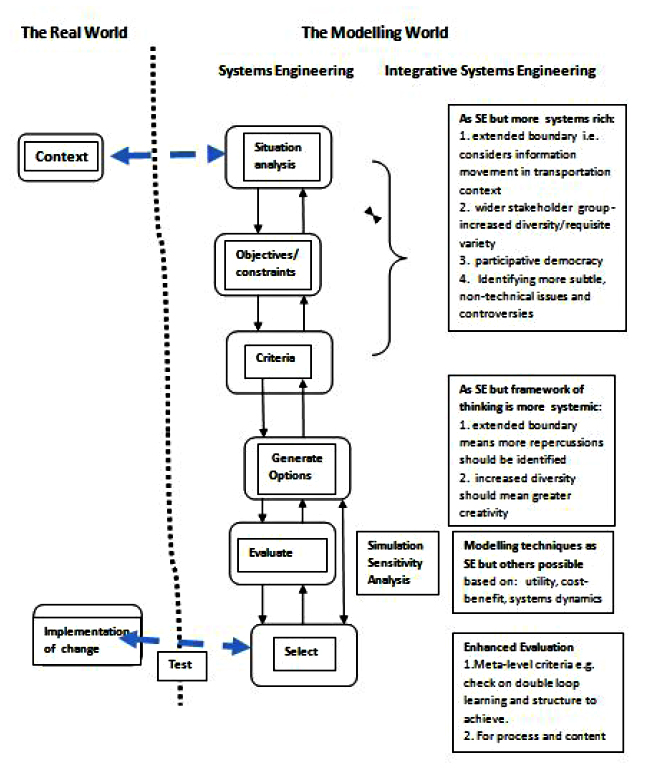
Figure 4 Systems Engineering and Integrated Systems Engineering, Team 4: Towards Integrative Systems Engineering: A Case Study Derived From Movement Of People, Goods And Information, Proceedings of the IFSR Conversations 2010, Pernegg, Austria
The second column shows an outline of the stages in a typical systems engineering methodology. It shows the phases of deciding on the objectives, criteria and constraints, generating options or alternative routes to the objectives, evaluating the options through e.g. computer simulation and sensitivity analysis, making the choice for engineering action and testing/implementation in the real world. The methodology is highly iterative. The methodology is termed “Integrated Systems Engineering” (ISE) because it considers systemic requirements over and above those simply involved in any classical design process (cf. ISO 15288). So, for example, in the case of a project for a new fighter aircraft, a systems engineering approach would necessarily cover issues in-service costs of maintenance, provision and stocking of spares, skills requirements and training needs of aircrew and maintenance engineers. Such a project however, would have a relatively small group of stakeholders, mainly composed of engineers, scientists, the military, manufacturers, and government officials. There would be no need to have the general public as part of a stakeholder group for the design process.
At the right of the diagram we show those aspects which are – in our opinion – key to a systemic approach (see below for more details).
Integrated Systems Engineering (ISE) – Summary of Differences
Though both approaches involve systems engineering, an urban transportation project is very different to developing a new fighter aircraft. This is because it is the public who regularly use the current system who are the experts in that they are likely to be best placed to comment on its shortfalls, be able to identify needs for information which could improve the system, and be able to assess how proposals for new technology may offer benefits and disadvantages. It is for these reasons that a widened stakeholder group is so important.
We believe that our consideration of urban transportation represents a more systemic approach to a complex case study. Another intention of ours is, that rather than just considering the problem of transporting people and goods, we consider the movement/transporting of people, goods and information as one system. Movement of information is itself a significant matter to consider, in parallel to the movement of physical items. Traditionally information is used as means to improve the transport of people and goods, but not considered as item in its own rights, thus, limiting the scope of the systems boundary.
The boxes on the right hand side of Figure 4 give a summary of differences between SE and our recommendations for ISE at the following broad phases of the process.
Problem formulation/objectives and criteria phases
- More attention to diversity of view and requisite variety
- Extended boundary in both:
- coverage of investigation to include needs for movement of information
- a widened boundary for consultation with those who use the system, are affected by the system, or are excluded by the current arrangements
- A major attempt to incorporate the user-designer concept, and participative “democracy” into the project process.
We would aim to achieve a “necessary and sufficient” level of diversity in the group until the “point of diminishing contribution” was evident and thus closure on participation could be agreed upon. It would be our intention to exploit the potential of ICT in terms of the speed of communication and interaction between stakeholders as much as possible which will also be beneficial in addressing the issue of complexity.
Options generation and evaluation phases
As a wider group of stakeholders is involved, the goals/objectives/criteria will have been set with the capability to understand repercussions of options considered across a wider boundary.
While the same range of creativity techniques would be used, a major advantage is that ideas generated, say, during brainstorming or other techniques, would be related to a wider boundary.
The same advantage applies to the identification of constraints and the evaluation of options.
LS commented that using meta-level criteria such as those suggested by Vester would be helpful in evaluating the process. These include to what extent double –loop learning will emerge as the design process develops, and whether a structure exists which could capitalize on the learning. She hoped to consider further and if time allows follow up with a separate paper.
Gerhard commented that designing a new process/methodology is not enough. It is necessary to introduce it to the stakeholders, which is often not an easy task (Chroust, 2002).
Once established one has to observe with what competence the processes are actually enacted.
From the field of software engineering a wealth of evaluation methods for assessing the capability of an organisation to perform a given predefined process (Humphrey, 1989, ISO15504, 2004). This can be used as a criterion for the ability of this organisation to produce quality product (or solutions) in the future, in our case a reasonable, well balanced system. and thus acceptable to the users.
Thoughts On Emerging Technology
Largely due to lack of time, but also the boundary of the Team’s technical expertise, most of conversation was focused on systems thinking around the issue of urban transportation rather than the potential of any specific emerging technology. However, we recognized that in some urban contexts like Vienna, the two-wheeled Segway, and its four-wheeled development (Segway Centaur (2010)), could have a useful role. For example, a proposal for a public-funded project for Segways to be available for hire at a train station, promoted as means for, say, onward travel to a nearby commercial centre, might interest the Mayor. This project could be introduced using the kind of methodology outlined above. It would provide the necessary context to widen the stakeholder group for extended involvement throughout the project, to widen simulation and evaluation methods, and to test out communication technology e.g. on the rental availability and position of Segway, and their electronic locking and release.
Also, the Team’s exposure to the chaos after the disruption to air travel crucially exposed the need for integrated information and communication systems to help travellers. As European airspace unexpectedly closed from 15 April onwards, so websites and other information channels became jammed, and the travelling public had little to go on as to what action they should take to complete their journeys home. The long queues which formed at airline customer service desks for information showed that no plan for dealing with major disruption was in place. Train stations and ferry ports were similarly unprepared. Work is needed on the needs of information to support systems to deal with major disruption of this kind, and the technology to carry this to the end-user.
Conclusion
Urban transportation is an ideal context to consider a more systemic form of systems engineering. Firstly, this is because movement of information, which is usually seen as means to improve the transport of people and goods (in the sense of “logistics”), is itself a significant matter to consider. Thus the movement of people, goods and information should be viewed as one system.
Urban transportation is also an ideal context to begin to develop a systems engineering approach which is more systems rich, as it offers the chance to incorporate user-views and the underlying ‘WHAT’ in design change. It is the public who regularly use the current system who are the “experts”, in that they are likely to be best placed to comment on its shortfalls, to be able to identify needs for information which could improve the system, and be able to evaluate the benefits and/or disadvantages that proposals for new technology may offer. These users, along with others affected by the system or excluded by the current system should be an important part of the stakeholder group, to provide crucial diversity and requisite variety. Such an enhanced stakeholder group will also provide the potential to add greater creativity to discussion, and assess and evaluate proposals from a user perspective. These characteristics, along with additional methods of process evaluation which we have suggested, have caused us to name this enhanced approach Integrative Systems Engineering (ISE).
References:
Ackoff R, L. (2001) A brief guide to interactive planning and idealized design,
http://zimmer.csufresno.edu/~sasanr/Teaching-Material/MIS/Systems-Approach/idealized-redesignguide.pdf (accessed 30 April 2010).
Ashby W, R. (1956) An introduction to cybernetics, Chapman and Hall, London.
Banathy B, H. (1996) Designing Social Systems in a Changing World . Plenum: New York.
Beer S. (1989) The Viable Systems model; its provenance, development, methodology and pathology in Espejo, R and Harnden R (eds.) The Viable Systems Model: Interpretations and applications of Stafford Beer’s VSM, John Wiley & Sons, Chichester.
Checkland P, B. (1981) Systems Thinking, Systems Practice, John Wiley & Sons, Chichester.
Checkland, P. (2009) Systems Thinking, Systems Practice.- John Wiley & Sons, Chi Chichester.
Chroust, G. Soft Factors impeding the Adoption of Process Models in: Fernandez, M. and others, EUROMICRO 2002, Dortmund Sept 2002, pp. 388–395 IEEE Computer Society, Los Alamitos, 2002.
Chroust, G. Communication Gaps in Modern Agoras in: Chroust, G., Hofer, C., Hoyer, C. : Proceedings of the Twelfth Fuschl Conversation, pp. 29–35, Inst. f. Systems Engineering and Automation, Johannes Kepler University Linz, Austria, SEA-SR-07, Jan 2005.
Chroust, G. Classifying Problems according to their Design Complexity. in: Chroust, G. , Metcalf, G: Fifteenth IFSR Conversation, pp. ?? Inst. f. Systems Engineering and Automation, Johannes Kepler University Linz, Austria, SEA-SR-28, August 2010.
Crawford, J.H. Carfree Cities International Books, Utrecht, NL, 2002.
Espinoza, A., H. Benking, G. Chroust , G. Hamza Building a New Agora, IFSR Newsletter vol. 22 (2004), no. 1, pp. 3–5.
Espinoza, A., H. Benking, G. Chroust , G. Hamza: New Agoras for the 21st Century – Conscious Self-Guided Evolution. in: Chroust, G., Hofer, C., Hoyer, C. : Proceedings of the Twelfth Fuschl Conversation, pp. 29–35, Inst. f. Systems Engineering and Automation, Johannes Kepler University Linz, Austria, SEA-SR-0, Jan 2005}.
Graham and Marvin (2001), quoted in The Open University (2003) T206 Energy for a Sustainable Future: Managing Energy Demand
Geerken T., Vercalsteren A., and Borup M. (2009) Review of the Mobility Domain in System Innovation for Sustainable Consumption and Production – Mobility, Geerken and Borup (eds.), Greenleaf Publishing, Sheffield, UK
Hofstede, G. and G. J. Hofstede Cultures and Organiszations – Software of the Mind McGraw-Hill, NY 2005.
Humphrey, W.S. Managing the Software Process Addison-Wesley Reading, Mass. 1989.
Institute of Environmental Management and Assessment (2002) Perspectives: guidelines on participation in environmental decision-making, London IMEA (2002) (quoted in The Open University (2006) T863 Environmental decision-making: a systems approach, Block 3 Making environmental decisions and learning from them) .
ISO/IEC ISO/IEC 15288:2006: Systems Engineering – System Life Cycle Processes, Techn. Report, Internat. Org. for Standarization, ISO/IEC JTC 1/SC 7/WG 7 (Jan 2006).
ISO/IEC ISO/IEC 15504-1:2004 Information Technology – Process Assessment – Part 1: Concepts and Vocabulary Techn. Report , ISO/IEC JTC 1/SC 7/WG 10, 2004.
Mrotzek, M. , G. Ossimitz Catastrophe Archetypes – Using System Dynamics to Build an Integrated Systemic Theory of Catastrophes in: Chroust, G., P. Doucek, J. Klas, (eds.): IDIMT-2008 – Managing the Unmanageable – 16th Interdisciplinary Information Management Talks, pp. 3671–384 Verlag Trauner Linz, 2008.
Mrotzek, M. Catastrophe Dynamics – A Systemistic Exploration of Catastrophes towards a Set of Catastrophe Archetypes Using the System Dynamics Simulation Method , PhD-Thesis Alpe-Adria University Klagenfurt, Faculty for Technical Sciences, Feb. 2009.
The Open University (2003) T206 Energy for a Sustainable Future: Managing Energy Demand, Milton Keynes
Segway Centaur (ATV Series) with Lithium Batteries. https://www.msu.edu/~luckie/centaur/centaur.html. (Accessed July 9, 2010).
The Open University (2006) TXR248, Hard systems methodology, Milton Keynes.
Vester, F. (2007) The Art of Interconnected Thinking (English version), MCB Publishing House, Munich.
Walton, D., Y. Horiuchi, U. Kordes, C. Fuchs, B. Rivera , G. Rowland: Fuschl extension: igniting a new form of conversation in: Metcalf, G., Chroust (eds.): Proceedings of the Thirteenth Fuschl Conversation, April 22-27, 2006, pp. 12–23 Inst. f. Systems Engineering and Automation, Kepler Univ. Linz, 2006, SEA-SR-13.
Yasaku, H. Toshi-Shukushou no Jidai (Shrinking Cities), Tokyo: Kadokawa, 2009 (in Japanese). Nippon Design Kikou, ed. Kuruma-shakai no Re-design – Kin-mirai Mobility eno Teigen (Redesigning the Automobile-oriented Society – A Proposal for Mobility in the Near Future) (in Japanese). Tokyo: Kajima-Shuppankai, 2004.

A horizontal flipchart of Team 4, Team 4: Towards Integrative Systems Engineering: A Case Study Derived From Movement Of People, Goods And Information, Proceedings of the IFSR Conversations 2010, Pernegg, Austria
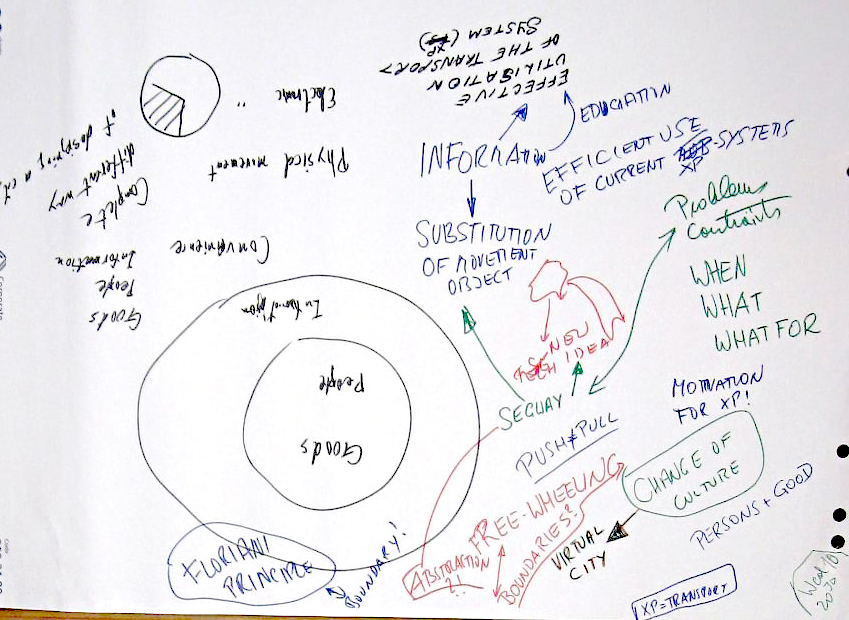
A horizontal flipchart of Team 4, upside down, Team 4: Towards Integrative Systems Engineering: A Case Study Derived From Movement Of People, Goods And Information, Proceedings of the IFSR Conversations 2010, Pernegg, Austria
18 The term Problem Champion seems more appropriate in his context than the more common term of problem owner
19 The Segway is a self-balancing electric vehicle for one person. It has with two wheels in parallel one axis. Computers and motors in the base of the device keep the Segway driving upright, the passenger enacts control by leaning forward or backward. It is already on the market.
20 Saint Florian is an Austrian saint believed to be helpful in preventing fires. A well-know prayer is: „Saint Florian, don’t put fire on my house, put it rather on ten other ones ….“. Hence the term ‚Floriani-Principle’.
21 A Viennese anecdote from around 1900 underlines this dilemma. A rich banker was advised by his doctor to walk to the office for health reasons. He did, but in order to avoid the impression that he could not afford to pay for a cab, he had an empty cab follow him.
22 Ironically, Team members were caught up in a sudden onset disaster affecting their travel home at the end of the conversation. The Icelandic volcano eruption on 14 April caused the shutdown of airspace over much of Europe for several days. The sudden removal of the air element of international travel caused extensive systemic effects on other forms of travel and accommodation at international, national, regional and urban level. It was evident that no planning had taken place at any level for a disruption of this kind. We would hope that in future, planning for the problem of sudden removal of “single elements” of transportation systems does take place.
